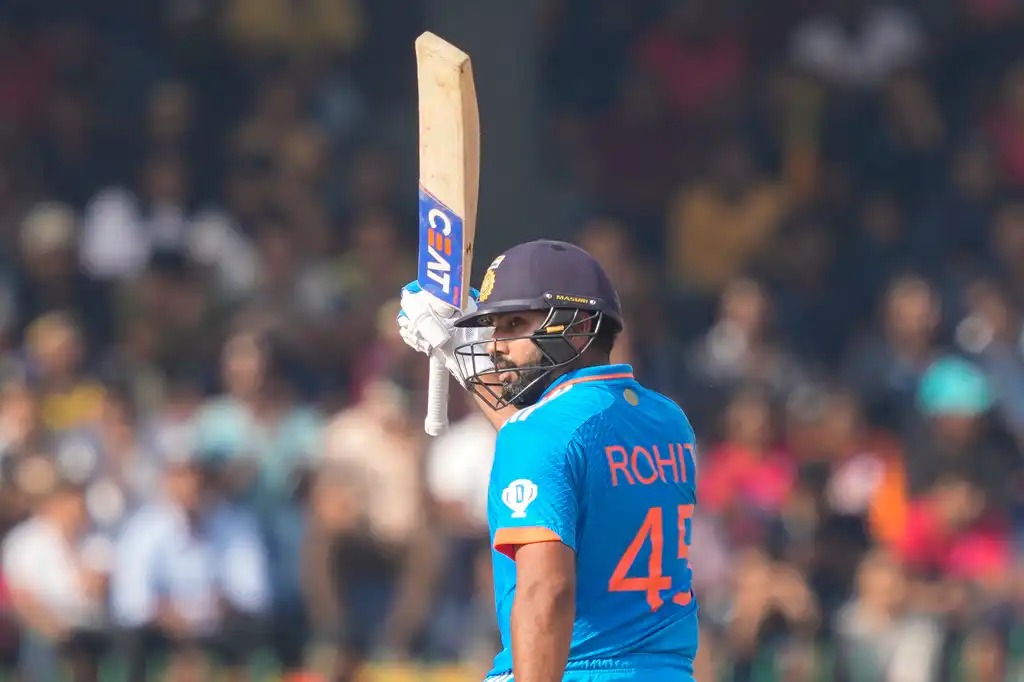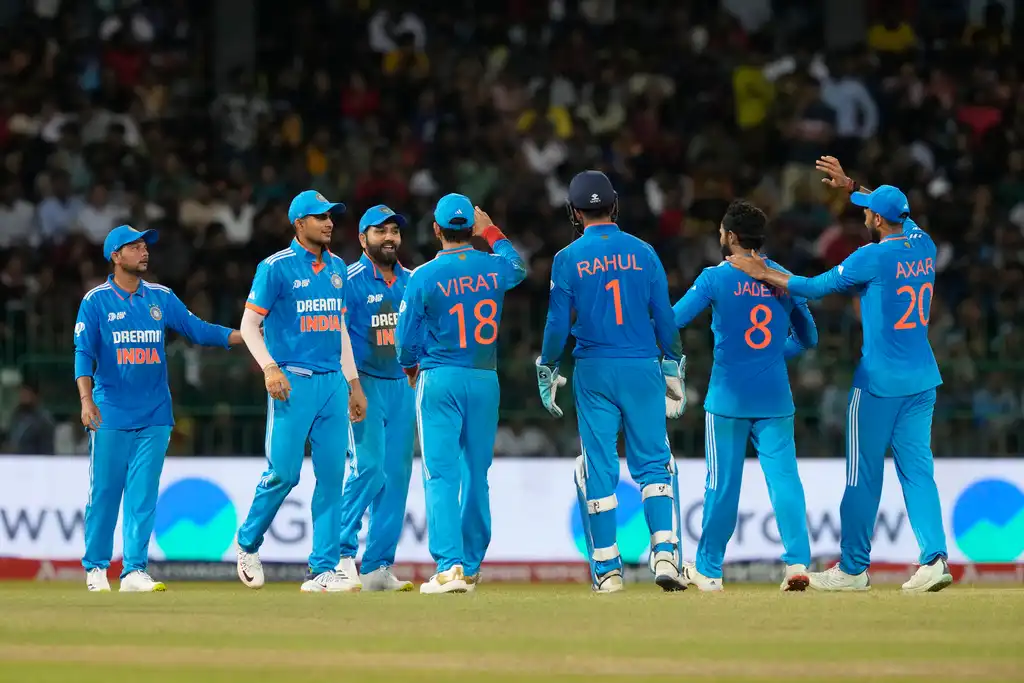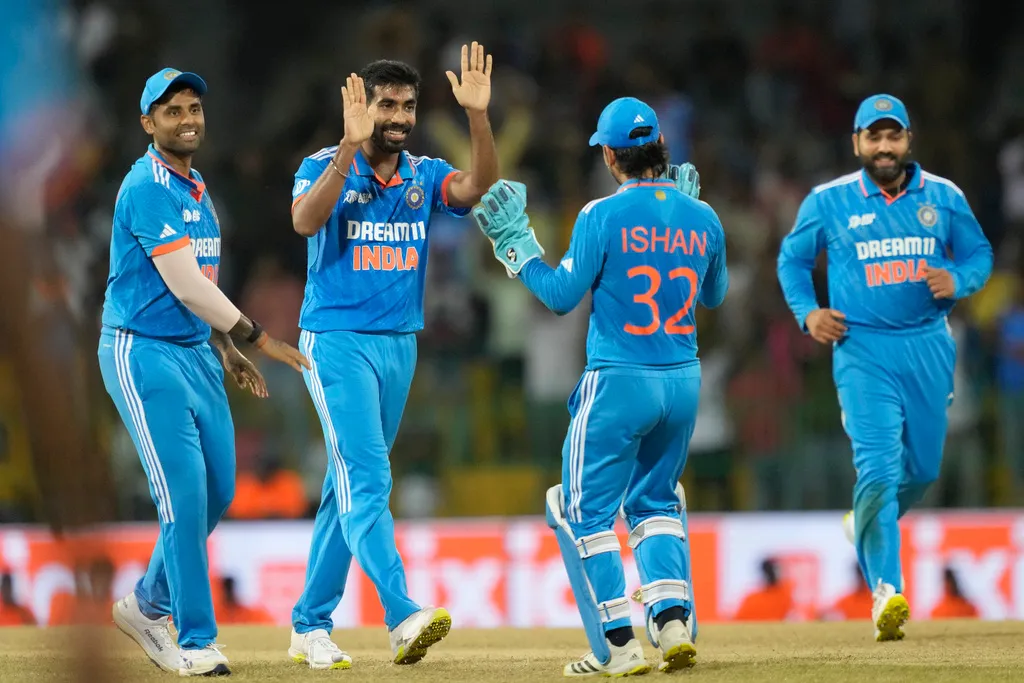 Bumrah has returned to his best in ODIs during Asia Cup 2023 (AP Photo)
Bumrah has returned to his best in ODIs during Asia Cup 2023 (AP Photo)
As a familiar sub-continental rivalry begins to take shape for one last time in the Asia Cup 2023, it ought to be said that the odds for a win in the much-awaited eventual match rest with India.
Even though Sri Lanka led by Dasun Shanaka seemingly holds the edge given they are contesting on home turf, for now, it seems to advantage India for one clear factor.
A big, decisive one.
Surely, for most of us, at the very outset, it appears that India hold the key since no fewer than five of their batters are in form; these being no ordinary contenders but massive forces in Kohli and Rohit and the rising Gill and Kishan. Then there’s, of course, the returning KL Rahul, with a recent century to his name.
But quite frankly, it is largely because India are leaving no boxes unticked, especially in the bowling department that allows them the comfort to contest like a full manic force in action.
While it’s true that captain Rohit Sharma went past 10,000 ODI runs and compiled a stroke-filled fifty very recently as his teammate and good friend Virat Kohli crossed the massive milestone of 13,000 one-day runs, it’s the cumulative effort of a well-balanced bowling line up that has allowed India to get under the skin of their sub-continental opponents.
The real big story, especially from an India perspective of the ongoing Asia Cup 2023 is that it is the bowlers who’ve let India prevail up until now with just a game to go.
To begin with, the biggest wicket-taker, the ace spinner among them all from the Indian contingent, Kuldeep Yadav, always so hard to score off has already taken a fifer and then a four-for.
As per usual, his flight and guile have proven to be too deceptive even for the sub-continental batsmen, who usually play spin well than other full-time ICC members.
Of course, the return of Bumrah, who’s attacking in tandem with Siraj and Shami has only helped the Indian cause, wherein the bowling force does well enough to defend scored that thanks to batsmen in red hot form are in no way minuscule.
At this point in time and to be fair, India have had quite the luxury of utilising their bowlers in such a way that Shami, Bumrah and Siraj, three of India’s fast bowling behemoths haven’t had to play together.
Such is the bench strength of the squad that in batting all rounders, Axar Patel and Shardul Thakur, India have been able to mow down their opponents and in some cases, especially in their second game against Pakistan and then, the most recent victory against the hosts, the team has appeared quite untouchable.
Of course, it is beyond any scope of doubt that when you have two proven matchwinners, one a fast bowling supremo with an edge of deception in the form of Bumrah and the other, a spin wizard in Kuldeep, your opposite number is anyways under much pressure.
This pressure then transforms into duress in circumstances where India’s opponents don’t bat out of their skins.
This was precisely the case as seen in the game against Pakistan where a total batting failure - or should one say bowling supremacy- and moreover, the meek surrender of Sri Lanka enabled India to grasp big wins.
No scorecard that reads 128 all out and then, 172 all out as seen in the case of Pakistan and Sri Lanka, respectively looks pretty. Can it ever?
But truth be told, the ability of Indian bowlers to accumulate dot balls for the sake of the team has led to a favourable scenario, wherein others- such as Siraj and Shami, despite not getting to bowl in every single game-have allowed India to keep their nose ahead in the contest.
It’s not just that Bumrah or Kuldeep are the only ones among the wickets; Shami and Siraj have together accounted for seven wickets so far.
On his part, despite being a tad bit expensive in the contest against Nepal, Siraj ensured that he was among the wickets in taking a three-for in that very contest.
Shami, who’s been used rather cautiously with the World Cup just around the corner, ensured he was in fine rhythm; a useful 2-32 against Bangladesh, yet another economical spell by the experienced campaigner allowed India to battle hard.
All of that said, it’s vital to look at just how well have the set of spinners and medium pacers operated together as one unit, a derivation one can understand by taking into consideration how they fared in each of the games india played up to this point.
Kindly refer to the table below
Game 5 - India vs Nepal - Nepal 230 all out.
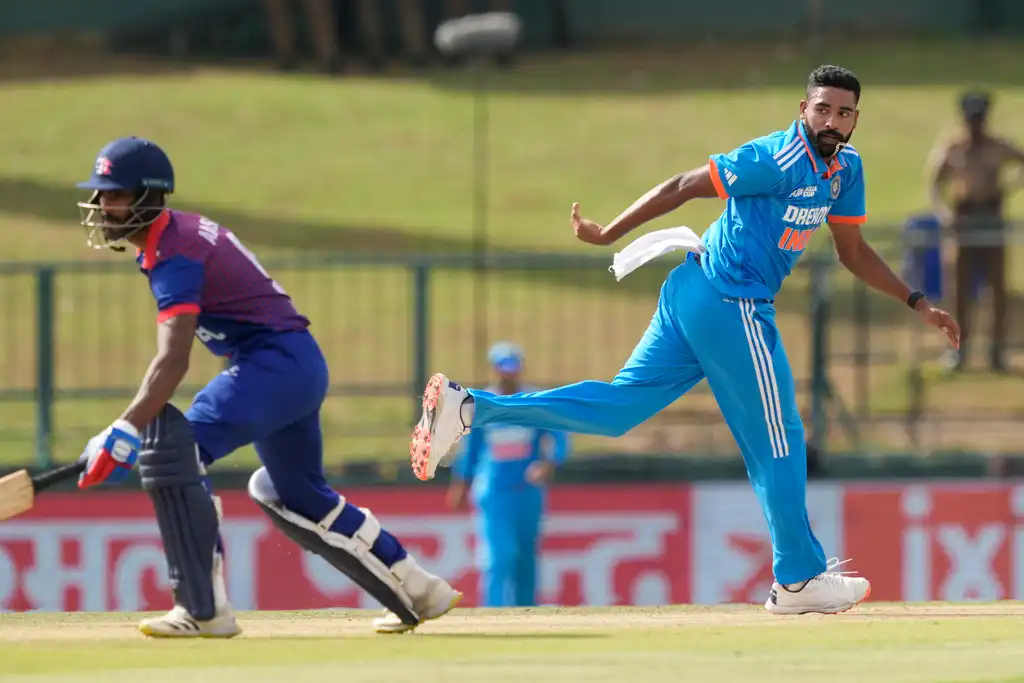 Siraj was the most successful against NEP (AP Photo)
Siraj was the most successful against NEP (AP Photo)
Shami- 1 wicket. Siraj- 3 wickets. Pandya- 1 wicket. Thakur- 1 wicket. Jadeja- 3 wickets. Kuldeep bowled 2 maidens.
(1 bowler went wicketless)
Game 9- India vs Pakistan - Pakistan 128 all out.
 Kuldeep snapped a fifer against PAK (AP Photo)
Kuldeep snapped a fifer against PAK (AP Photo)
Kuldeep- 5 wickets. Pandya- 1 wicket. Thakur- 1 wicket. Bumrah- 1 wicket.
(2 bowlers went wicketless)
Game 10- India vs Sri Lanka - Sri Lanka 172 all out.
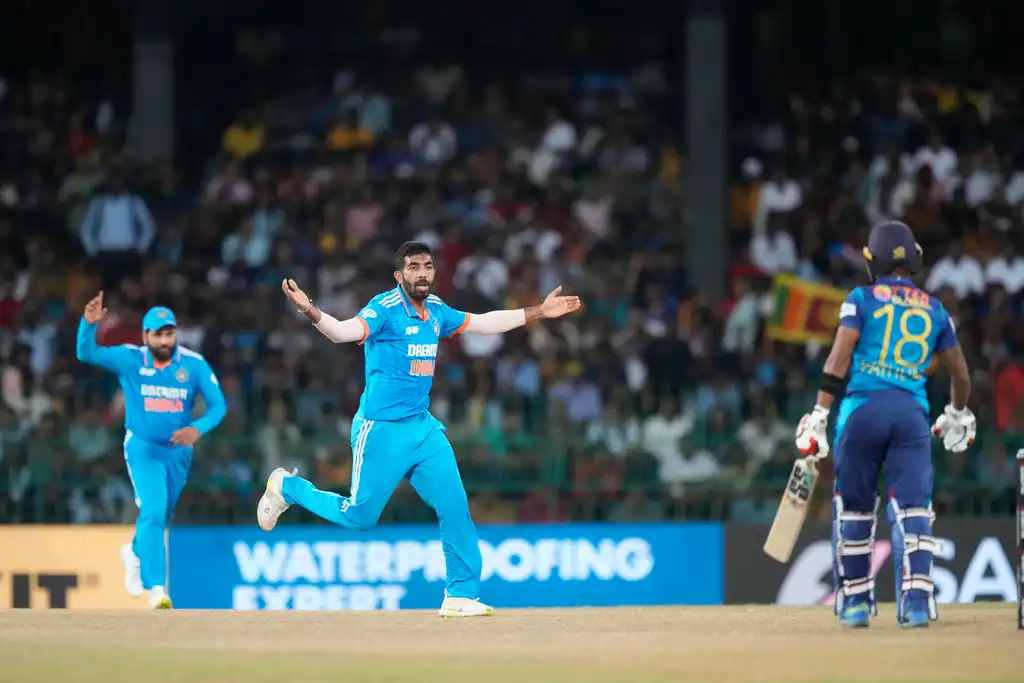 Bumrah initiated SL's collapse (AP Photo)
Bumrah initiated SL's collapse (AP Photo)
Bumrah- 2 wickets, Siraj and Pandya- 1 wicket. Jadeja- 2 wickets. Kuldeep- 4 wickets.
(Only 1 bowler went wicketless)
With just one more game to go, it being the high octane final, it won’t just be about batting that’ll do it for India; the bowlers, will need to execute one last push to ensure the team goes all the way.
![[Watch] Rohit Sharma Becomes 2nd Fastest Indian to 10000 Runs in ODI](https://onecricketnews.akamaized.net/parth-editor/oc-dashboard/news-images-prod/1694513503643_497B30FA-6831-4DB1-B1DE-517555537E39.jpeg?type=mq)
 (1).jpg?type=mq)
